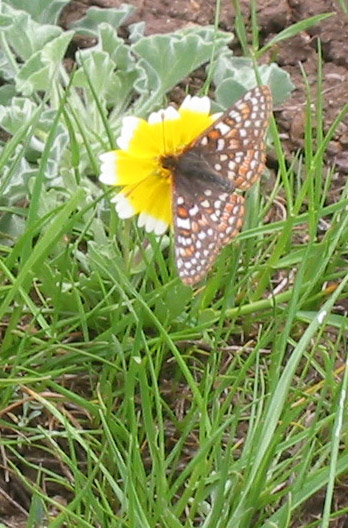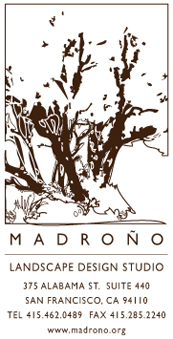 Shifting identities and strange alliances occur along the wildland-urban interface, where natural ecosystems collide with cities and the side effects of human industry. Plants and animals living along these intersections must adapt to changing conditions, or perish. We now raise the curtain on a drama where cows protect rare and endangered butterflies from certain death by automobile, with a dramatis personae of native wildflowers and exotic grasses playing supporting roles.
Shifting identities and strange alliances occur along the wildland-urban interface, where natural ecosystems collide with cities and the side effects of human industry. Plants and animals living along these intersections must adapt to changing conditions, or perish. We now raise the curtain on a drama where cows protect rare and endangered butterflies from certain death by automobile, with a dramatis personae of native wildflowers and exotic grasses playing supporting roles.
Coyote Ridge, a large serpentine grassland two miles wide and fifteen miles long, lies just south of San Jose along Hwy 101. Serpentinite is the California state rock; this bluish-green stone was formed in darkness near the center of the earth, heated to a high boil and bubbled up through surface fractures (in this case the San Andreas Fault) to the open light. Most plants cannot grow on serpentine soil -- not enough nitrogen, too much magnesium -- but a select group of natives evolved in tandem with this infertile habitat, and they can survive it. Such an inhospitable medium also holds off the weedy European annual grasses that have so transformed the rest of our state. The beauty of the serpentine grassland therefore derives not just from its dazzling burlesque of April wildflowers, but because it shows what California looked like 300 years ago, when native grasslands embraced a third of the state; today they cover less than 1%.
Where did all the California grasslands go? First they were over-grazed by cattle, starting with the Spanish in the late 18th century and then again during the Gold Rush, when a million head of beef were shipped west to feed hungry miners. Many surviving grasslands were soon plowed under for agriculture and paved over for development. Those few remaining then suffered from poor fire management policy, where "wildfire suppression" was the only rule -- as opposed to the practice of Native Americans, who understood fire's regenerative power and set "controlled burns" in the grasslands for thousands of years. The final blow was the arrival of European annual grasses better adapted to the above conditions, growing taller and more quickly than the native bunchgrasses, self-seeding so prodigiously as to choke out any competition.
Right now the 7000 acres of Coyote Ridge are awash in shimmering colors: rolling yellow carpets of tidy tips and goldfields, bright swaths of purple owl's clover and red jeweled onion, a vision of nodding white fairy lanterns and blue spikes of western larkspur, an exaltation of cream- and buttercups. Hairy black and yellow Bay checkerspot caterpillars gorge themselves on the low silvery foliage of dwarf plantain, and adult Bay checkerspot butterflies tipple nectar from tidy tips and wild onions. The proverbial birds and bees visit other wildflowers in promiscuous plenty, performing their sexual duties. The web of biodiversity here includes more than 100 plant species, with an average of 20 species occurring per half-meter-squared (approximately the area you can fit your arms around); this richness of flora in turn supports countless populations of tiny creatures that creep, scurry, burrow, and fly.

